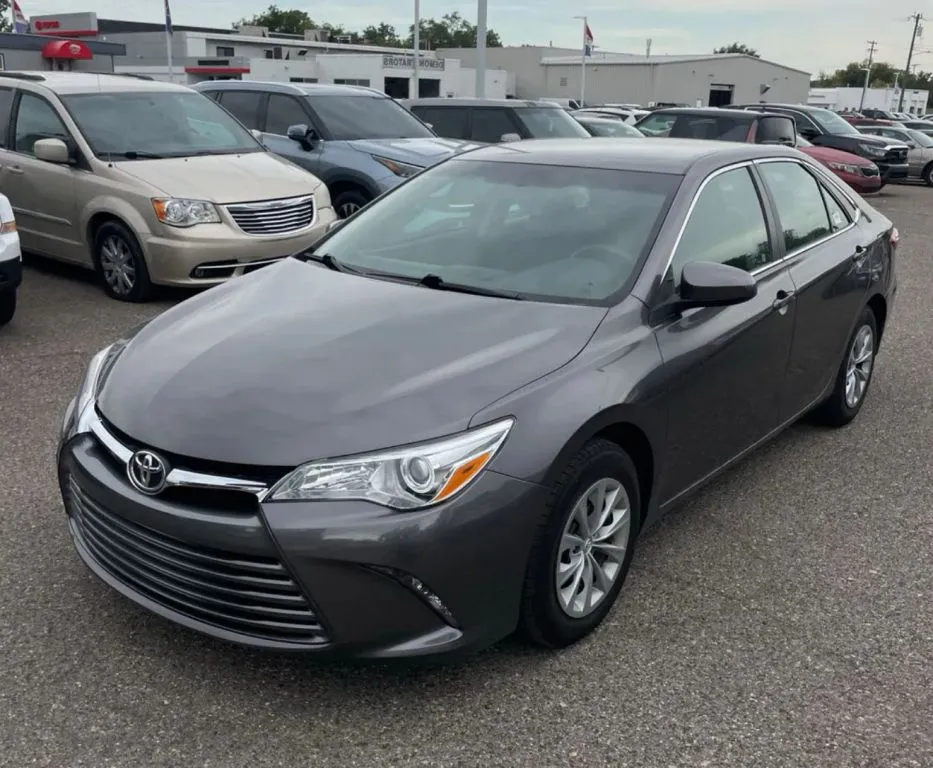Cargo Van Dimensions: Everything You Need to Know for Efficient Transport
Table of Contents
- Why Cargo Van Dimensions Are Important for Efficient Transport
- Understanding the Different Types of Cargo Vans
- Standard Cargo Van Dimensions and Capacity
- High Roof Cargo Van Dimensions and Advantages
- Extended Cargo Van Dimensions and When to Use Them
- Factors to Consider When Choosing Cargo Van Dimensions
- 1. Load size and weight
- 2. Accessibility
- 3. Maneuverability
- 4. Fuel efficiency
- 5. Regulations and compliance
- 6. Budget and operating costs
- Cargo Van Dimensions for Specific Industries
- Conclusion: Choosing the Right Cargo Van Dimensions for Efficient Transport

Are you in the business of efficient transport? Do you rely on cargo vans to get the job done? If so, then you know how crucial it is to understand cargo van dimensions. Having a thorough understanding of the dimensions of your cargo van is essential for maximizing space utilization and ensuring efficient transport.
In this ultimate guide, we will provide you with everything you need to know about cargo van dimensions. From overall length and width to interior measurements and cargo capacity, we will cover it all. Whether you are planning to transport furniture, appliances, or boxes, knowing the exact dimensions of your cargo van will help you determine if your items will fit and how much you can carry.
Don't waste time and money on guesswork. Arm yourself with the knowledge you need to streamline your operations and optimize your transport efficiency. Stay tuned for our comprehensive guide that will equip you with the insights and information to make informed decisions about cargo van dimensions and ensure successful and hassle-free transport every time.
For more information on vehicle options, check out a guide to buying a van.
Why Cargo Van Dimensions Are Important for Efficient Transport

Cargo van dimensions are a critical factor in ensuring efficient transport operations. The size and capacity of your cargo van directly impact your ability to move goods and materials effectively. Understanding the precise dimensions of your cargo van is essential for several reasons.
First and foremost, knowing the dimensions of your cargo van allows you to plan and organize your loads effectively. By understanding the length, width, and height of your van's interior, you can determine the maximum size and weight of the items you can transport. This information helps you avoid the frustration and expense of trying to fit oversized or overweight items into your van, which can lead to damage, delays, and additional costs.
Moreover, cargo van dimensions play a crucial role in maximizing the utilization of your van's space. If you don't know the exact dimensions, you may end up leaving valuable space unused or, worse, overloading your van, which can compromise safety and fuel efficiency. By understanding the precise dimensions of your cargo van, you can optimize the placement and stacking of your items, ensuring that every inch of space is utilized effectively.
Finally, cargo van dimensions are essential for complying with local and national regulations. Many regions have specific size and weight restrictions for vehicles on the road, and exceeding these limits can result in fines, penalties, and even legal issues. By understanding the dimensions of your cargo van, you can ensure that you stay within the legal limits and avoid any potential complications.
Understanding the Different Types of Cargo Vans

When it comes to cargo van dimensions, it's important to understand the different types of cargo vans available on the market. Each type of cargo van has its own unique set of dimensions and capabilities, and knowing the differences can help you choose the right van for your specific needs.
The most common types of cargo vans include standard cargo vans, high roof cargo vans, and extended cargo vans. Standard cargo vans are the most basic and widely available type, typically featuring a standard roof height and a range of lengths and widths to accommodate different needs. High roof cargo vans, on the other hand, offer additional height, making them ideal for transporting taller items or for use as a mobile workshop or workspace. Extended cargo vans, as the name suggests, feature a longer cargo area, providing more space for larger items or higher volume loads.
Each type of cargo van has its own advantages and disadvantages, and the choice will depend on the specific requirements of your transport needs. For example, a standard cargo van may be the most cost-effective option for smaller loads, while a high roof or extended cargo van may be necessary for larger or taller items. Understanding the differences between these van types and their respective dimensions will help you make an informed decision and ensure that you choose the right cargo van for your business.
If you're looking for something beyond cargo vans, consider exploring best family-friendly 3 row SUVs.
Standard Cargo Van Dimensions and Capacity

Standard cargo vans are the most widely available and commonly used type of cargo van. These vans typically feature a standard roof height and a range of lengths and widths to accommodate different needs. Understanding the standard cargo van dimensions and capacity is essential for efficient transport planning.
The most common standard cargo van dimensions include:
● Length: typically ranging from around 15 feet to 20 feet
● Width: generally between 6 feet and 7 feet
● Height: usually around 6 feet to 6.5 feet
These dimensions translate to a cargo capacity that can range from around 200 cubic feet to 500 cubic feet, depending on the specific model and configuration. This cargo capacity allows standard cargo vans to transport a wide variety of items, from small packages and boxes to larger pieces of furniture or equipment.
It's important to note that the exact dimensions and cargo capacity of a standard cargo van can vary depending on the manufacturer and model. Some vans may be slightly larger or smaller, and the cargo capacity can be affected by factors such as the presence of shelving, storage compartments, or other interior modifications. By understanding the standard cargo van dimensions and capacity, you can better plan your transport needs and ensure that your items will fit comfortably and securely in the van.
For those interested in performance vehicles, take a look at the 2024 Ford Raptor.
High Roof Cargo Van Dimensions and Advantages

In addition to standard cargo vans, the market also offers high roof cargo vans, which feature a taller interior height. These vans are designed to accommodate taller items or to provide additional space for use as a mobile workspace or workshop.
The key dimensions of high roof cargo vans typically include:
● Length: similar to standard cargo vans, ranging from around 15 feet to 20 feet
● Width: generally between 6 feet and 7 feet
● Height: usually around 7 feet to 8 feet
The increased height of high roof cargo vans can provide several advantages for efficient transport. Firstly, the additional vertical space allows you to transport taller items, such as furniture, appliances, or even some types of construction equipment, without the need to disassemble or tilt them. This can save time and effort during loading and unloading, and reduce the risk of damage to the items.
Discover the best off-roading used cars for rugged terrain needs.
Furthermore, the increased height of high roof cargo vans can be particularly beneficial for certain industries, such as delivery, moving, or construction. Professionals in these fields may need to access the cargo area more frequently, and the extra headroom provided by a high roof van can make this process more comfortable and efficient. Additionally, the increased height can be useful for converting the cargo area into a mobile workspace or workshop, providing ample space for tools, equipment, or even a workbench.
Extended Cargo Van Dimensions and When to Use Them

While standard cargo vans and high roof cargo vans cater to a wide range of transport needs, there are also extended cargo vans available on the market. These vans feature a longer cargo area, providing additional space for larger or higher-volume loads.
The key dimensions of extended cargo vans typically include:
● Length: usually ranging from around 17 feet to 22 feet
● Width: generally between 6 feet and 7 feet
● Height: similar to standard cargo vans, around 6 feet to 6.5 feet
The extended cargo area of these vans can translate to a cargo capacity that ranges from around 300 cubic feet to 600 cubic feet or more, depending on the specific model and configuration. This increased cargo capacity can be particularly useful for businesses that regularly transport bulky or oversized items, such as furniture, appliances, or construction materials.
Extended cargo vans can be especially beneficial in the following scenarios:
● Transporting large or awkwardly shaped items that require more space
● Handling high-volume loads, such as delivering multiple pallets or a large number of boxes
● Accommodating the needs of specific industries, such as furniture moving or construction, where larger cargo capacity is essential
While the increased cargo capacity of extended cargo vans can be a significant advantage, it's important to consider the overall dimensions and weight limitations of the vehicle. Ensure that the extended cargo van you choose can still maneuver effectively on the road and that the additional weight capacity is suitable for your transport needs.
Factors to Consider When Choosing Cargo Van Dimensions

When selecting a cargo van for your transport needs, there are several key factors to consider beyond just the dimensions of the vehicle. These factors can help you make an informed decision and ensure that you choose the right cargo van for your specific requirements.
1. Load size and weight
Determine the maximum size and weight of the items you need to transport regularly. This will help you identify the appropriate cargo van dimensions and capacity to meet your needs.
2. Accessibility
Consider how often you'll need to access the cargo area and whether the van's dimensions will allow for easy loading and unloading. High roof or extended cargo vans may be more suitable if you require frequent access to the cargo area.
3. Maneuverability
Ensure that the cargo van you choose can navigate the roads and environments in which you'll be operating. Larger vans may have more limited maneuverability in tight spaces or on narrow streets.
4. Fuel efficiency
Cargo van dimensions can impact fuel efficiency, with larger vans generally consuming more fuel. Consider your transportation needs and the associated fuel costs when selecting the appropriate cargo van.
5. Regulations and compliance
Be aware of any local or national regulations regarding vehicle size and weight restrictions. Choosing a cargo van that meets these requirements can help you avoid fines or legal issues.
6. Budget and operating costs
The dimensions of a cargo van can also affect the purchase price and ongoing operating costs, such as maintenance and insurance. Carefully evaluate your budget and long-term costs when making your decision.
By considering these factors, you can ensure that you choose the cargo van dimensions that best fit your specific transport needs, optimizing efficiency, safety, and cost-effectiveness.
Cargo Van Dimensions for Specific Industries

The choice of cargo van dimensions can vary significantly depending on the specific industry and transport needs. Different businesses and professionals may have unique requirements that call for different van configurations and capabilities.
In the delivery industry, for example, a high roof cargo van may be the preferred choice, as the additional height can accommodate taller items and make it easier for drivers to access the cargo area during frequent stops. The increased vertical space can also be useful for storing and organizing delivery items, such as packages and boxes.
For the moving and furniture industry, an extended cargo van may be the ideal solution. The longer cargo area can accommodate larger pieces of furniture, appliances, and other bulky items, reducing the need for multiple trips or the disassembly of items. The increased cargo capacity can also be beneficial for moving companies that need to transport a large volume of household goods.
In the construction and contracting industry, a cargo van with a high roof and extended length may be the most suitable choice. The additional height and length can accommodate tools, equipment, and building materials, while the overall cargo capacity allows for the efficient transport of all the necessary supplies to job sites.
Regardless of the industry, understanding the specific cargo van dimensions required for your transport needs is crucial. By selecting the right van, you can optimize efficiency, reduce costs, and ensure that your business operations run smoothly.
Conclusion: Choosing the Right Cargo Van Dimensions for Efficient Transport
In the world of efficient transport, understanding cargo van dimensions is a critical aspect of success. Whether you're in the delivery, moving, construction, or any other industry that relies on cargo vans, having a thorough knowledge of the available dimensions and their impact on your operations can make all the difference.
From standard cargo vans to high roof and extended models, each type of van offers its own unique set of advantages and considerations. By carefully evaluating your specific transport needs, load sizes, and industry requirements, you can select the cargo van dimensions that will best serve your business and optimize your efficiency.
Remember, cargo van dimensions are not just about the physical size of the vehicle – they also have a direct impact on your ability to maximize space utilization, comply with regulations, and ensure the safe and secure transport of your goods. By making an informed decision and implementing best practices for maximizing the use of your cargo van's interior, you can streamline your operations, reduce costs, and deliver a superior level of service to your customers.
If you're in Maryland, check out where to buy used Vans in Ellictt City and Elkridge for great deals.
So, take the time to explore the various cargo van dimensions available, and choose the one that aligns perfectly with your transport needs. With the right cargo van by your side, you'll be well on your way to efficient, reliable, and successful transport operations.










